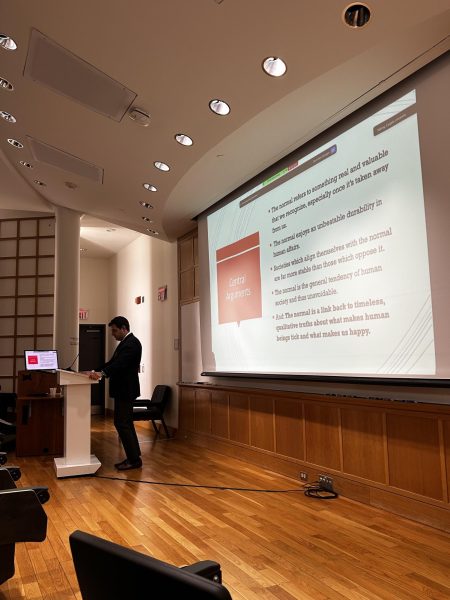Striving for Diversity at Colgate: Reporting on 150 Years of History
Since its founding, Colgate University has taken measures to establish a sense of diversity through enriching and expanding its student body, and adapting its campus in order to increase inclusivity and create better representations. The university still works toward the goal of achieving higher diversity on campus and establishing an environment conducive to a heterogenous student body.
In 1819, Colgate was iconically founded by 13 men who supported their experiment in education with 13 dollars and 13 prayers. The green of the sprawling hills, the glistening blue of Taylor Lake and the bright colors of the sugar maple and red oak trees eventually proved to be the focal point of the school’s campus in Hamilton in 1826. For 150 years, the university was an all-male institution. According to an article written in The New York Times, however, Colgate first began to introduce diversity when it became coeducational in the fall semester of 1970. The change to coeducation had the goal of adding 600 women to the then-present student body of 1,951 men.
Colgate’s transition to a coeducational campus was reported on in various local and national newspapers. In another New York Times article published on December 16, 1971, it presented the “ease” with which Colgate accepted coeds. Interviews conducted with Colgate students revealed that the presence of women resulted in the growth of the Art Department. These interviews also stated that students benefited from having a woman’s viewpoint in classes. Then-senior female student Linda Havlin explained in The New York Times the effect of this inclusion.
“As more girls come here, the attitudes of people are changing. Now the girls are [seen] more as day‐to‐day students, and not just something to look at,” Havlin said.
Archives of The Colgate Maroon-News detail the transition to a more gender inclusive campus. Published on September 6, 1970, articles that were written by James Surkamp and Douglas Levine stated that Colgate was one of the first small colleges in the Northeast to become co-educational. Retrieved from a 2011 Maroon-News article, the article highlighted Surkamp’s statement that the average first-year class of women was stronger academically than the matriculating men.
“As a group, the women are considered academically superior to the men, according to Dean of Students Guy V. Martin, who oversaw selection of the class last year as Dean of Admissions,” Surkamp wrote.
The timeline of Women’s Studies at Colgate shows the progression of the integration of women on campus and how women faculty gathered to push for the recognition of the needs of females in the community. These needs included restrooms, medical services and support programs for female students as they handled a predominantly male environment.
Throughout the 1970s, various forms of social change took place on campus. 1974 is highlighted as the “Year of the Woman” because of the quantity of women faculty appointed to tenure-stream positions; these women included Marilyn Thie, Margaret Maurer, Myra Smith, Lynn Staley and Mary Bufwack. The year 1980 marked the first Women’s Studies course taught by Thie, Pinchin and Bufwack. The course was titled “UNST 213: Women in the Anglo-American Tradition: an Interdisciplinary Perspective.” Moving forward to 1983, the WMST minor was established, and Ann Lane was hired to take the position as the first director of Women’s Studies. The university eventually credited a WMST major, as well, in 1990.
The Center for Women’s Studies prides itself on being a multipurpose organization and space on campus which provides students, faculty and staff with opportunities to discuss and acquire knowledge on subjects along the feminist spectrum. Intersectionality and inclusivity are highly valued; the Center for Women’s Students hosts the Brown Bag series, which focuses on presentations regarding gender and sexuality, and in 2009 the Office of LGBTQ Initiatives was established in the Center.
The roots of the Africana, Latin, Asian and Native American (ALANA) Cultural Center correlate to the beginnings of the Women’s Studies program. A cultural center was first opened in 1970 on the site of the former maintenance building. Its mission was “to develop educational programs and resources which demonstrate the contribution of ethnic groups for the benefit of Colgate students, faculty, staff, residents of Hamilton and other educational and urban institutions.” To become what it is today, it underwent refurbishment, and was guided and worked on by the efforts of groups like the Minority Affairs Committee.
A significant advancement occurred on April 22, 1989, when alumni and students of color gathered together to rededicate the cultural center to its original purpose. Then-President George Langdon called it “a commitment to diversity;” a plaque with the aforementioned date was created to state that the center was “dedicated to those brothers whose vision, determination and sacrifice to the ideals of cultural and ethnic diversity provided the foundation for the Cultural Center’s reality.” The center was officially renamed the ALANA Cultural Center in 1996.
Today, the ALANA building is home to 12 student organizations and includes a kitchen, music room, seminar room, library and multipurpose room. It stands as a learning center on campus and promotes the better understanding of Africana, Latin American, Asian American and Native American cultures, struggles and accomplishments.
Overall, a number of students and faculty hold the view that while Colgate has a lot to celebrate regarding its diversity, there is still a lot that must be done. Colgate’s current student body, based on demographic information collected on June 1, 2016, shows a gender ratio of 45 percent male and 55 percent female. Out of its then-2,922 total students, 22 percent was comprised of domestic students of color, 11 percent constituted first-generation college students and 15 percent represented international students, including dual citizens. The university strives to further the progress it has made and recognizes the importance of advocating for diversity.
Contact Celine Turkyilmaz at cturkyilmaz@colgate.edu.
Celine Turkyilmaz is a senior from Chicago, Illinois concentrating in English. She's previously served as a copy editor, news editor and reporter. She...




